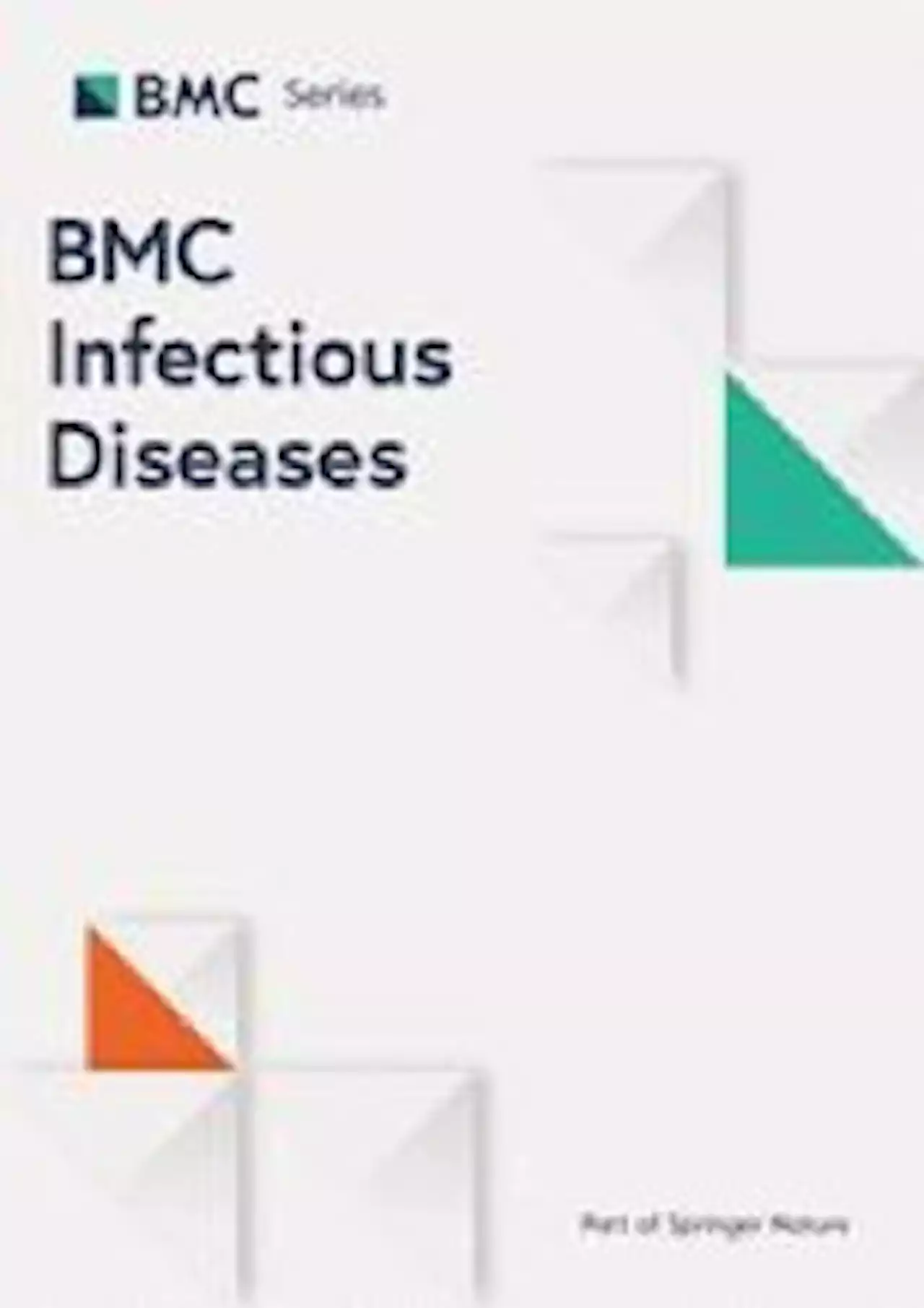A study in BMCMedicine finds that anti-depressants, particularly selective serotonin reuptake inhibitors, may prevent COVID-19 infection spread in the community. Further research is warranted.
]. Further mechanistic insight into the role of SSRIs outside the central nervous system will require detailed investigation of physiology and cell biology of SSRIs in appropriate experimental systems, with particular consideration given to pharmacokinetics of therapeutically relevant SSRI concentrations.The study has a number of important limitations, largely due to its retrospective nature and focus on a cohort of mental health patients.
The time period of the study was limited to the first wave of the COVID-19 pandemic, which presented novel adverse effects on mental health []; also, during this period, COVID-19 was associated with the original strain of SARS-CoV-2 rather than its subsequently documented variants.
Finally, although the association of interest appeared to be present across a range of diagnostic groups, the possibility cannot be ruled out that antidepressant use may have been a marker of personal or behavioural factors conferring protection, e.g. compliance with societal restrictions and/or personal protection measures in place at the time.
In the longer term, there may be merit in investigating the utility of ADs/SSRIs for treatment of other respiratory infections using similar cell biological mechanisms to COVID-19, e.g. influenza []. For now, one can hope that the results from this study will contribute to the public health policy debate on COVID-19 management, help re-establish drug repurposing in the context of COVID-19 treatment and highlight the potential for wider clinical benefits of psychotropic drugs.
Ireland Latest News, Ireland Headlines
Similar News:You can also read news stories similar to this one that we have collected from other news sources.
 BMC Series blog Co-designing safe spaces for menstrual health management in humanitarian settings
BMC Series blog Co-designing safe spaces for menstrual health management in humanitarian settings
Read more »
Meta-analysis of the effects of proton pump inhibitors on the human gut microbiota - BMC MicrobiologyMounting evidence has linked changes in human gut microbiota to proton pump inhibitor (PPI) use. Accordingly, multiple studies have analyzed the gut microbiomes of PPI users, but PPI–microbe interactions are still understudied. Here, we performed a meta-analysis of four studies with available 16S rRNA gene amplicon sequencing data to uncover the potential changes in human gut microbes among PPI users. Despite some differences, we found common features of the PPI-specific microbiota, including a decrease in the Shannon diversity index and the depletion of bacteria from the Ruminococcaceae and Lachnospiraceae families, which are crucial short-chain fatty acid-producers. Through training based on multiple studies, using a random forest classification model, we further verified the representativeness of the six screened gut microbial genera and 20 functional genes as PPI-related biomarkers, with AUC values of 0.748 and 0.879, respectively. Functional analysis of the PPI-associated 16S rRNA microbiome revealed enriched carbohydrate- and energy-associated genes, mostly encoding fructose-1,6-bisphosphatase and pyruvate dehydrogenase, among others. In this study, we have demonstrated alterations in bacterial abundance and functional metabolic potential related to PPI use, as a basis for future studies on PPI-induced adverse effects.
Read more »
 Factors associated with acute kidney injury among preterm infants administered vancomycin: a retrospective cohort study - BMC PediatricsBackground Vancomycin (VCM) is a widely used antibiotic for the treatment of gram-positive microorganisms, with some nephrotoxic effects. Recent studies have suggested that piperacillin-tazobactam (TZP) aggravates VCM-induced nephrotoxicity in adults and adolescents. However, there is a lack of research investigating these effects in the newborn population. Therefore, this study investigates whether the concomitant use of TZP with VCM use increases the risk of acute kidney injury (AKI) and to explore the factors associated with AKI in preterm infants treated with VCM. Methods This retrospective study included preterm infants with birth weight | 1,500 g in a single tertiary center who were born between 2018 and 2021 and received VCM for a minimum of 3 days. AKI was defined as an increase in serum creatinine (SCr) of at least 0.3 mg/dL and an increase in SCr of at least 1.5 times baseline during and up to 1 week after discontinuation of VCM. The study population was categorized as those with or without concomitant use of TZP. Data on perinatal and postnatal factors associated with AKI were collected and analyzed. Results Of the 70 infants, 17 died before 7 postnatal days or antecedent AKI and were excluded, while among the remaining participants, 25 received VCM with TZP (VCM + TZP) and 28 VCM without TZP (VCM—TZP). Gestational age (GA) at birth (26.4 ± 2.8 weeks vs. 26.5 ± 2.6 weeks, p = 0.859) and birthweight (750.4 ± 232.2 g vs. 838.1 ± 268.7 g, p = 0.212) were comparable between the two groups. There were no significant differences in the incidence of AKI between groups. Multivariate analysis showed that GA (adjusted OR: 0.58, 95% CI: 0.35–0.98, p = 0.042), patent ductus arteriosus (PDA) (adjusted OR: 5.23, 95% CI: 0.67–41.05, p = 0.115), and necrotizing enterocolitis (NEC) (adjusted OR: 37.65, 95% CI: 3.08–459.96, p = 0.005) were associated with AKI in the study population. Conclusions In very low birthweight infants, concomitant use of TZP did not increase the r
Factors associated with acute kidney injury among preterm infants administered vancomycin: a retrospective cohort study - BMC PediatricsBackground Vancomycin (VCM) is a widely used antibiotic for the treatment of gram-positive microorganisms, with some nephrotoxic effects. Recent studies have suggested that piperacillin-tazobactam (TZP) aggravates VCM-induced nephrotoxicity in adults and adolescents. However, there is a lack of research investigating these effects in the newborn population. Therefore, this study investigates whether the concomitant use of TZP with VCM use increases the risk of acute kidney injury (AKI) and to explore the factors associated with AKI in preterm infants treated with VCM. Methods This retrospective study included preterm infants with birth weight | 1,500 g in a single tertiary center who were born between 2018 and 2021 and received VCM for a minimum of 3 days. AKI was defined as an increase in serum creatinine (SCr) of at least 0.3 mg/dL and an increase in SCr of at least 1.5 times baseline during and up to 1 week after discontinuation of VCM. The study population was categorized as those with or without concomitant use of TZP. Data on perinatal and postnatal factors associated with AKI were collected and analyzed. Results Of the 70 infants, 17 died before 7 postnatal days or antecedent AKI and were excluded, while among the remaining participants, 25 received VCM with TZP (VCM + TZP) and 28 VCM without TZP (VCM—TZP). Gestational age (GA) at birth (26.4 ± 2.8 weeks vs. 26.5 ± 2.6 weeks, p = 0.859) and birthweight (750.4 ± 232.2 g vs. 838.1 ± 268.7 g, p = 0.212) were comparable between the two groups. There were no significant differences in the incidence of AKI between groups. Multivariate analysis showed that GA (adjusted OR: 0.58, 95% CI: 0.35–0.98, p = 0.042), patent ductus arteriosus (PDA) (adjusted OR: 5.23, 95% CI: 0.67–41.05, p = 0.115), and necrotizing enterocolitis (NEC) (adjusted OR: 37.65, 95% CI: 3.08–459.96, p = 0.005) were associated with AKI in the study population. Conclusions In very low birthweight infants, concomitant use of TZP did not increase the r
Read more »
 The correlation of hemoglobin and 28-day mortality in septic patients: secondary data mining using the MIMIC-IV database - BMC Infectious DiseasesBackground Previous studies found minimal evidence and raised controversy about the link between hemoglobin and 28-day mortality in sepsis patients. As a result, the purpose of this study was to examine the association between hemoglobin and 28-day death in sepsis patients by analyzing the Medical Intensive Care IV (MIMIC-IV) database from 2008 to 2019 at an advanced medical center in Boston, Massachusetts. Methods We extracted 34,916 sepsis patients from the MIMIC-IV retrospective cohort database, using hemoglobin as the exposure variable and 28-day death as the outcome variable, and after adjusting for confounders (demographic indicators, Charlson co-morbidity index, SOFA score, vital signs, medication use status (glucocorticoids, vasoactive drugs, antibiotics, and immunoglobulins, etc.)), we investigated the independent effects of hemoglobin and 28-day risk of death by binary logistic regression as well as two-piecewise linear model, respectively. Results Hemoglobin levels and 28-day mortality were shown to be non-linearly related.The inflection points were 104 g/L and 128 g/L, respectively. When HGB levels were between 41 and 104 g/L, there was a 10% decrease in the risk of 28-day mortality (OR: 0.90; 95% CI: 0.87 to 0.94, p-value = 0.0001). However, in the range of 104–128 g/L, we did not observe a significant association between hemoglobin and 28-day mortality (OR: 1.17; 95% CI: 1.00 to 1.35, P value = 0.0586). When HGB was in the range of 128–207 g/L, there was a 7% increase in the risk of 28-day mortality for every 1 unit increase in HGB (OR: 1.07; 95% CI: 1.01 to 1.15, P value = 0.0424). Conclusion In patients with sepsis, baseline hemoglobin was related to a U-shaped risk of 28-day death. When HGB was in the range of 12.8–20.7 g/dL, there was a 7% increase in the risk of 28-day mortality for every 1 unit increase in HGB.
The correlation of hemoglobin and 28-day mortality in septic patients: secondary data mining using the MIMIC-IV database - BMC Infectious DiseasesBackground Previous studies found minimal evidence and raised controversy about the link between hemoglobin and 28-day mortality in sepsis patients. As a result, the purpose of this study was to examine the association between hemoglobin and 28-day death in sepsis patients by analyzing the Medical Intensive Care IV (MIMIC-IV) database from 2008 to 2019 at an advanced medical center in Boston, Massachusetts. Methods We extracted 34,916 sepsis patients from the MIMIC-IV retrospective cohort database, using hemoglobin as the exposure variable and 28-day death as the outcome variable, and after adjusting for confounders (demographic indicators, Charlson co-morbidity index, SOFA score, vital signs, medication use status (glucocorticoids, vasoactive drugs, antibiotics, and immunoglobulins, etc.)), we investigated the independent effects of hemoglobin and 28-day risk of death by binary logistic regression as well as two-piecewise linear model, respectively. Results Hemoglobin levels and 28-day mortality were shown to be non-linearly related.The inflection points were 104 g/L and 128 g/L, respectively. When HGB levels were between 41 and 104 g/L, there was a 10% decrease in the risk of 28-day mortality (OR: 0.90; 95% CI: 0.87 to 0.94, p-value = 0.0001). However, in the range of 104–128 g/L, we did not observe a significant association between hemoglobin and 28-day mortality (OR: 1.17; 95% CI: 1.00 to 1.35, P value = 0.0586). When HGB was in the range of 128–207 g/L, there was a 7% increase in the risk of 28-day mortality for every 1 unit increase in HGB (OR: 1.07; 95% CI: 1.01 to 1.15, P value = 0.0424). Conclusion In patients with sepsis, baseline hemoglobin was related to a U-shaped risk of 28-day death. When HGB was in the range of 12.8–20.7 g/dL, there was a 7% increase in the risk of 28-day mortality for every 1 unit increase in HGB.
Read more »
 Britain’s poorest families spend up to £5,600 more on same goods as pre-CovidA leading charity has revealed that Britain’s poorest families are paying thousands of pounds more for the same services compared to pre-pandemic times.
Britain’s poorest families spend up to £5,600 more on same goods as pre-CovidA leading charity has revealed that Britain’s poorest families are paying thousands of pounds more for the same services compared to pre-pandemic times.
Read more »
Mirror wrong to say NHS standards ‘since Covid’ behind excess cardiovascular deaths - Full FactA report in the Mirror said that a collapse in NHS standards explains almost 100,000 excess deaths with cardiovascular disease “since Covid”. But most happened in 2020 and 2021, and Covid itself might have caused most of them.
Read more »
